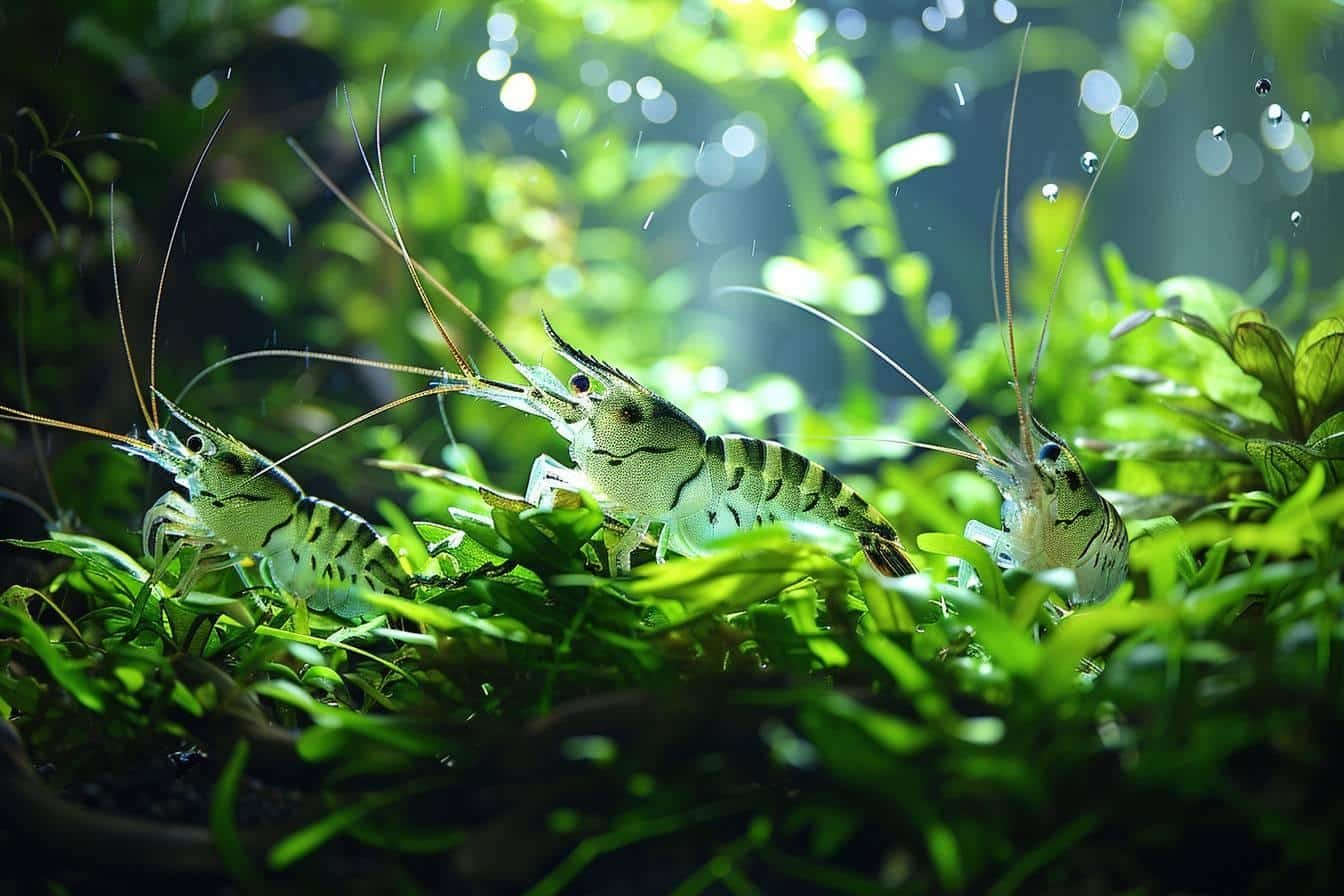Welcome to the exciting world of aquaristics! Looking after a pregnant shrimp in an aquarium can be an exciting but tricky task. That's why I'm going to give you a few practical tips to ensure the well-being of your little protégés. Whether you're a young pet shop floor manager or just a keen shrimp fan, here you'll find all the information you need to look after these fascinating creatures.
What is the blue velvet neocaridina heteropoda?
The Neocaridina heteropoda Blue Velvet, or Blue Velvet shrimpThis is one of the most popular species for aquarists. Bright blue and measuring between 1.5 and 3 cm, it is not only aesthetically pleasing but also easy to care for.
As an avid animal lover, I find this shrimp to be quite facetious. It spends its time looking for algae and biofilm, making your aquarium not only more beautiful but cleaner too.
Here are some of the special features of the Blue Velvet shrimp:
- Colour: Bright blue
- Size: Between 1.5 and 3 cm
- Life expectancy: 1 to 2 years
- Ideal water temperature: 21-23°C
- Water pH: 6.2 to 8
- Water hardness: 2 to 8 KH
How should you care for your blue velvet shrimp?
To ensure the health and well-being of your Blue Velvet shrimps, there are a few things you should do. First of all, make sure you respect the water parameters. A water at 19 degrees can extend the life of shrimp but lengthens the incubation period of eggs. Water at 25°C encourages faster growth, but reduces the life span of the shrimp.
Table of ideal parameters for Blue Velvet shrimp :
| Parameter | Value |
|---|---|
| Temperature | 19-25°C (ideal: 21-23°C) |
| pH | 6,2 – 8 |
| Water hardness | 2 - 8 KH |
You should also ensure that the aquarium contains enough hiding places for young shrimp. This will increase their chances of surviving to maturity. Use aquatic plants and other natural elements to create these hiding places.

What food should you feed your blue velvet prawns?
Food is essential for the health of your shrimp. Blue Velvet shrimp, like other aquarium shrimp, are omnivores and detritivores. They consume algae and biofilm and can also feed on commercial bottom feed.
List of suitable foods :
- Algae and biofilm
- Commercial groundfish feed
- Blanched green vegetables
Be sure to test the water regularly for copper, which is lethal to shrimp. For more details on feeding shrimp, take a look at this excellent guide a complete guide to a balanced diet.
What about the reproduction of blue velvet shrimp?
Reproducing Blue Velvet shrimp is relatively simple, especially if you keep to the water parameters. The female releases pheromones after moulting, signalling males to come and mate with her. The eggs remain attached under her abdomen, where they are ventilated until they hatch.
To facilitate reproduction :
- Put plants in the aquarium.
- Ensure a sufficient supply of algae and biofilm.
The eggs incubate for around 3 to 4 weeks under the female's belly. A water temperature of 19 degrees can extend this period, while the safety of the young shrimp is improved by the presence of hiding places in the aquarium.
To find out more about the best practices for breeding shrimp in aquariums, consult this page. a complete guide to successfully rearing shrimp in an aquarium.
General information on amano prawns
Amano shrimps (Caridina multidentata) are another popular species used for their ability to consume filamentous algae. Living in large colonies, they are often deployed in community aquariums.
Need a refresher on their care? Here are a few key points:
- Complex reproduction requiring alternating fresh and salt water
- Strong social interaction with other shrimps
- Omnivorous and detritivorous consumption
The eggs and larvae of Caridina Japonica swim out to sea with the current to grow, then return to freshwater as adults.
To maximise your chances of success in breeding these fascinating creatures, don't forget to consult this guide. guide to the best species to improve your aquatic ecosystem.
How to recognise pregnant prawns and their health?
It is important to recognise a pregnant shrimp and monitor its state of health. When a shrimp Caridina Japonica is carrying eggs, it often taps its belly with its feet to ventilate the eggs. Loss of eggs during moulting is another sign to watch out for.
If this happens, you can recover the viable eggs and ventilate them artificially using a landing net placed in front of the filter outlet. The eggs are generally expelled after incubating under the belly for 3 to 4 weeks.
Here are a few tips to ensure the health of your prawns:
- Test your water regularly for traces of copper
- Maintain a stable temperature of between 20 and 22°C to avoid overcrowding
- Ensure an adequate and varied diet for shrimp in aquariums
As someone immersed in the world of animals, ensuring the good health of your shrimps is paramount. Explore more practical advice by visiting this specialised site.
We hope these tips will help you take better care of your pregnant shrimp in the aquarium. The world of aquaristics is full of surprises and learning, and each stage, however delicate, is a wonderful opportunity to strengthen your passion.
